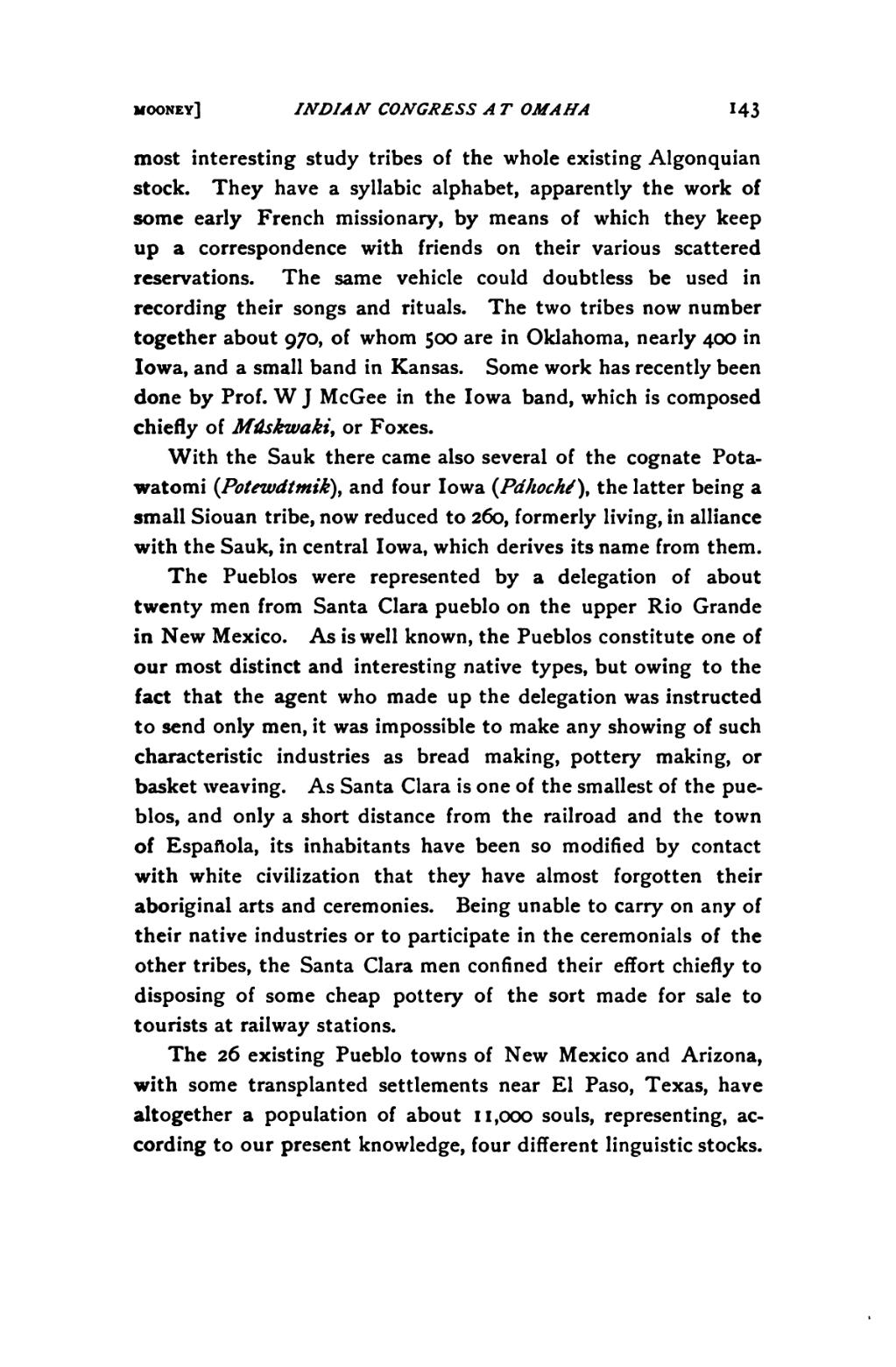MOONEY] INDIAN CONGRESS A T OMAHA 143
most interesting study tribes of the whole existing Algonquian stock. They have a syllabic alphabet, apparently the work of some early French missionary, by means of which they keep up a correspondence with friends on their various scattered reservations. The same vehicle could doubtless be used in recording their songs and rituals. The two tribes now number together about 970, of whom 500 are in Oklahoma, nearly 400 in Iowa, and a small band in Kansas. Some work has recently been done by Prof. W J McGee in the Iowa band, which is composed chiefly of M&skwaki, or Foxes.
With the Sauk there came also several of the cognate Pota- watomi (Potewdtmik), and four Iowa (Pd/iocA/) t the latter being a small Siouan tribe, now reduced to 260, formerly living, in alliance with the Sauk, in central Iowa, which derives its name from them.
The Pueblos were represented by a delegation of about twenty men from Santa Clara pueblo on the upper Rio Grande in New Mexico. As is well known, the Pueblos constitute one of our most distinct and interesting native types, but owing to the fact that the agent who made up the delegation was instructed to send only men, it was impossible to make any showing of such characteristic industries as bread making, pottery making, or basket weaving. As Santa Clara is one of the smallest of the pue- blos, and only a short distance from the railroad and the town of Espaflola, its inhabitants have been so modified by contact with white civilization that they have almost forgotten their aboriginal arts and ceremonies. Being unable to carry on any of their native industries or to participate in the ceremonials of the other tribes, the Santa Clara men confined their effort chiefly to disposing of some cheap pottery of the sort made for sale to tourists at railway stations.
The 26 existing Pueblo towns of New Mexico and Arizona, with some transplanted settlements near El Paso, Texas, have altogether a population of about 11,000 souls, representing, ac- cording to our present knowledge, four different linguistic stocks.
�� �
